Best of travel: Gorilla conservation in Uganda

To tide us over until we’re able to travel again, we’re republishing classic travel stories from our archives. Today we revisit Noo Saro-Wiwa’s examination of gorilla conservation in Uganda
•••
Standing in Bwindi Impenetrable Forest in south-western Uganda, I’m dodging a light hail of fruits being thrown down by gorillas in the trees above. The animals climb down and gallop through the undergrowth.
While they roly-poly down the steep slopes, we chase them in a less dexterous fashion, slipping onto our backsides and hoping we don’t roll in their faeces. Eventually they pause. Shafts of golden sunlight pierce the canopy and shine on a female. She is lying supine, her newborn baby resting on her chest. She takes issue with one of us and screams, flinging an arm in our direction.
Our bodies flinch but we can’t take our eyes off our primate cousins. The proximity is mindblowing. There are only 800 gorillas in Uganda’s Bwindi Impenetrable Forest – that’s one for every nine million humans on the planet. We are so privileged to be here, yet at the back of our minds is the niggling truth that our fun has come at the expense of the humans who once lived in this magnificent wilderness.
For thousands of years, the hunter-gathering Batwa (so-called ‘pygmies’) lived blameless, carbon-neutral lives in this ancient primary forest. They co-existed in peace with the apes – eating or harming them was culturally taboo – but nonetheless, when Bwindi was designated a national park in 1991 the government evicted the hunter-gatherers in order to protect the gorilla population. Any Batwa who re-entered the forest was threatened with a bullet. All that remains of Africa’s oldest human culture are the occasional grassy clearings in the lush hills and valleys.
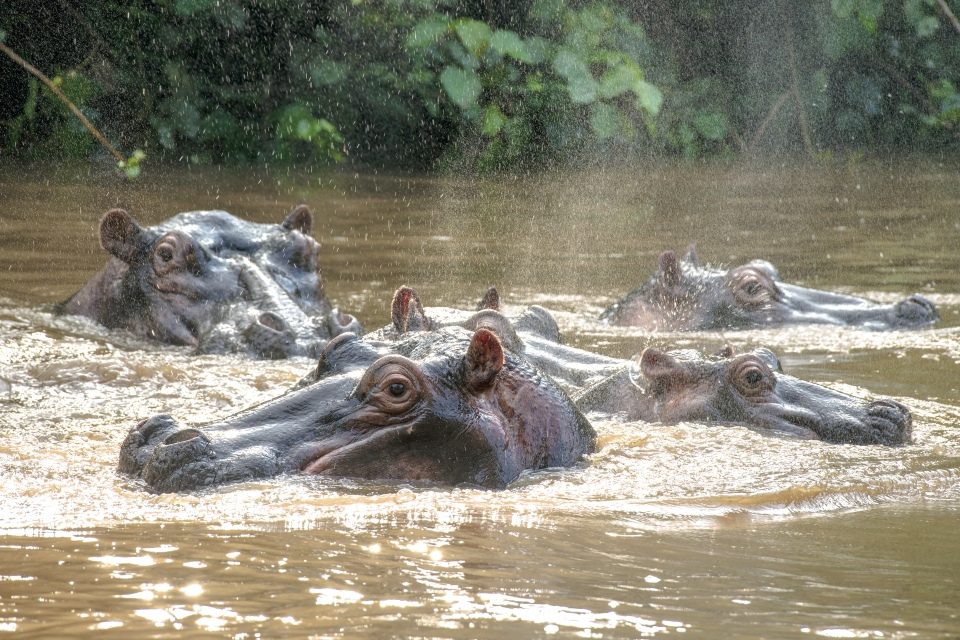
These ‘conservation refugees’ are the collateral damage in the tussle between agriculture, industry and population growth in Uganda. Bwindi’s pristine flora and fauna were under threat from population increase, poverty, poaching and logging.
Since land ownership and money were not in the Batwa culture, they were given no compensation following their eviction. Adjusting to life outside of the forest wasn’t easy. With nowhere to go, the Batwa squatted on farmland. Some became addicted to alcohol and drugs, drifting into nearby towns like Kisoro, which offered all the comfort and familiarity of outer space. Many work as low-paid farm labourers, others as freelance porters for visitors to Bwindi.
When given new homes with corrugated metal roofing, some of them were so horrified by the sound of raindrops hitting the metal they chose to sell their roofs rather than suffer the racket.
Illiterate and strangers to the concept of agriculture and ownership, the Batwa made innocent mistakes, such as eating crops planted by local farmers. When given new homes with corrugated metal roofing, some of them were so horrified by the sound of raindrops hitting the metal they chose to sell their roofs rather than suffer the racket. Their simplicity drew contempt among non-Batwa people in Uganda, some of whom viewed these forest-dwellers as “primitive” and ripe for exploitation.
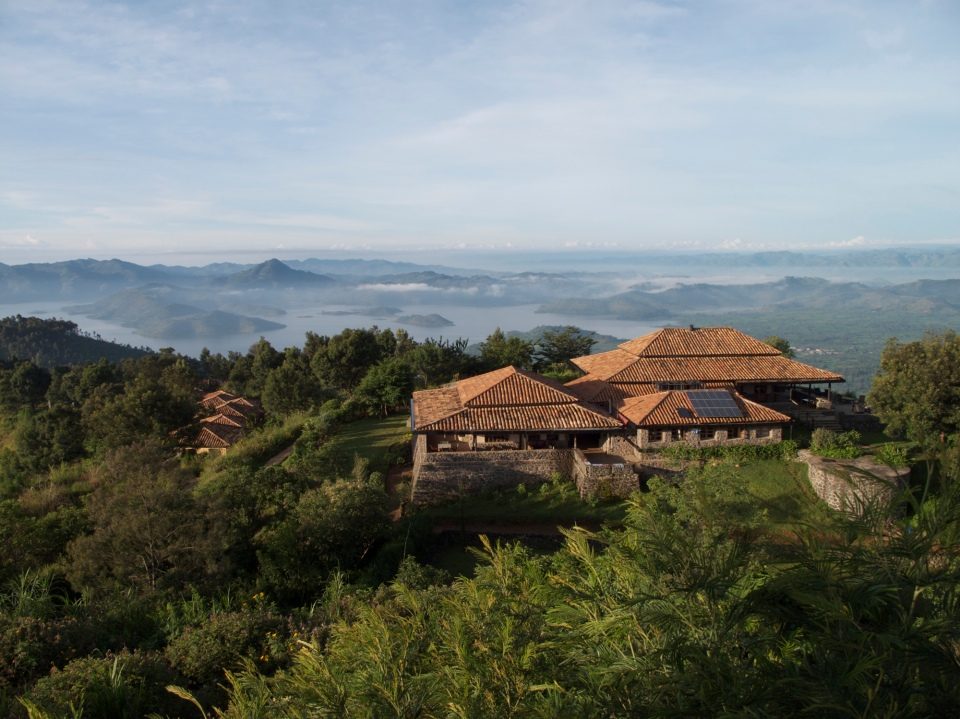
Once upon a time, the fate of the 60,000-strong Batwa was met with indifference. These days, there is a more enlightened recognition that the wellbeing of these eldar statespeople of Uganda is intrinsically tied to the forest and the tourism industry that funds the gorillas’ survival. Nobody appreciates this more keenly than Praveen Moman, owner and founder of Volcanoes Safaris, the company that runs the gorilla tours. When he launched Volcanoes Safaris, Moman knew he could not separate social responsibility from ecological conservation. And so in 2018 Volcano Safaris completed construction of a village for 18 Batwa families, providing permanent homes for them after 25 years of squatting. The company purchased 10 acres in Musasa, about 4km from Mgahinga Gorilla National Park.
The village has a community centre and land set aside for recreation and agriculture. Residents will be able to grow their own produce, freeing themselves from the prohibitive land rent they pay farmers.
This new hamlet comprises 18 huts, constructed by the Batwa from volcanic stone base with mud and water. The villagers are very poor and there’s no electricity just yet, but if wealth were measured in natural beauty these Batwa are living in the lap of luxury: in the near-distance a volcano rises into the blues skies, and rolling green hills are sprinkled with boulders and cooled by a breeze suffused with the aroma of eucalyptus plants.
On my arrival, the Batwa villagers sing an ancient welcome song from the forest. They are shy, much like other pre-agricultural peoples living out of their element, and lack the assertiveness that comes with having full agency over one’s life.
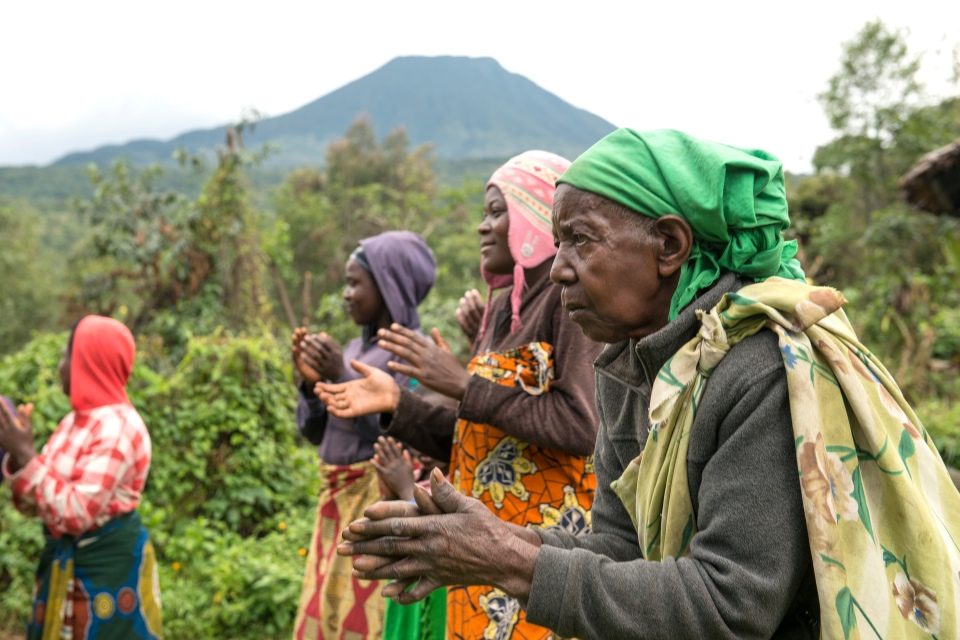
The kids are snot-faced and hilarious. One five-year-old boy dances in front of my phone camera, pushing away anyone who tries to join him in the frame. Another boy urges me to take a photo of him with a stone balanced artfully on his head. They attend local schools and speak local languages alongside their native Rufumbira dialect. Assimilation and intermarriage seem an inevitability. Every hip-hop hand gesture camera pose, every name scrawled in English on the huts’ exteriors marks a little dent in the Batwa culture.
The biggest symbol of their move towards modernity is the village community centre, a six-metre-high domed multi-purpose space. Designed by German-Swedish architects, it can be used for meetings, dance performances and adult education. The structure is made of tree branches and a papyrus roof cover, with grass mats for the ceiling. There are translucent sheets for windows, and two garage-like doors that can swing open to increase the size of the space.
To one side is a medical room where a doctor sees patients once a month for health checks and vaccinations. Life expectancy among the Batwa was just 28 years in their forest days. Four in 10 of their children used to die before their fifth birthday, but not anymore. I cuddle the village’s newest arrival, a ball-fisted three-day old girl.
Her parents haven’t decided on a name for her yet, but when they do her birth will be documented, which represents a big cultural change. “They have problem with figures,” says an interpreter, referring to the older generation. They have no idea what year they were born. When I ask a woman called Jane how old she is, she giggles as the interpreter tells me, “Jane has been thirty-one since 2013!”
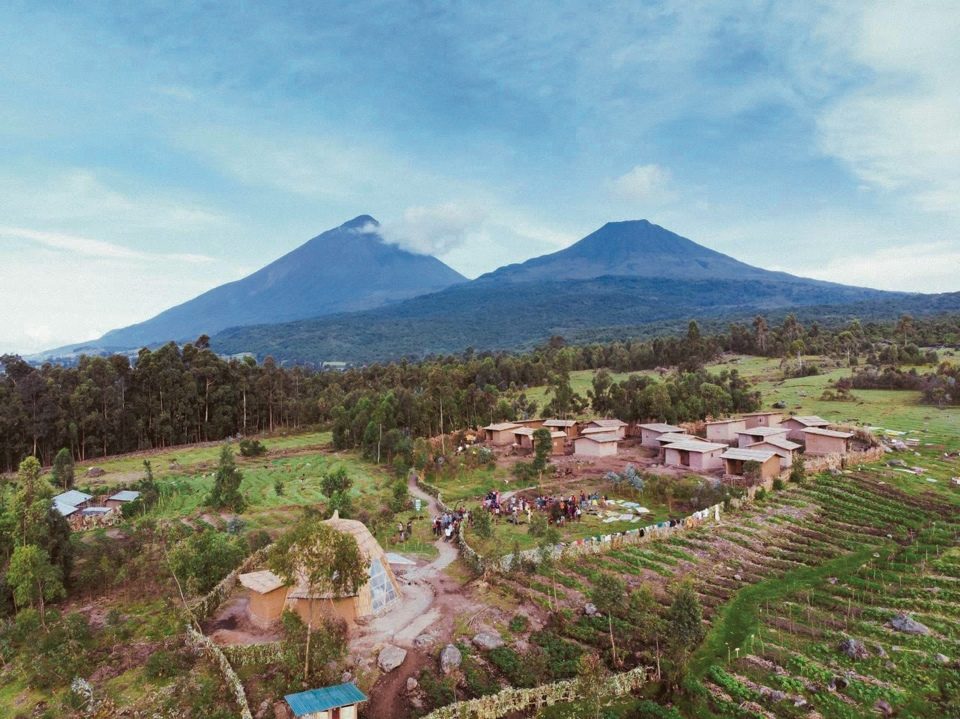
The adults have designed a Heritage Experience for the Batwa youngsters to teach them about their cultural past: they receive instructions on medicinal plants and on building snares to trap forest animals, such as bush pigs, buffaloes and kobs – they used to barter the meat for farmers’ crops.
For a sample of traditional Batwa forest life, I visit a small forest situated next to Volcanoes Safari’s Gahinga Lodge. It is a mini version of a larger Batwa Trail, which is run by a different entity. Our Batwa guide is the splendidly named Safari Monday.
He and a female companion are wearing traditional pelts of goatskin around their shoulders. Via an interpreter, Safari tells us that medicine is all around us. He scoops up a mass of soil containing the protruding roots of a giant fern. The Batwa grind it into a tea to treat skin allergies. He then holds up another plant – a giant lobilea shrub, which is pounded into water to create an emetic drink. For soap, they chop thorny apples into water and stir it into a paste.
“Do you prefer modern medicine?” I ask.
“Traditional medicine is better,” Safari replies. For starters it costs nothing. And while diseases are cured, new ones are introduced through the modern diet, he says.
Further into the forest, Safari invites us to use a bow and arrow to hit a board covered in goatskin (I almost hit the target at both attempts!) and nearby is a tree house, for the children’s entertainment. Over by a traditional thatched-roof hut, some Batwa men demonstrate how they build fires. Twiddling those wooden sticks is a laborious chore, not for the infirm or injured, reminding us of the demanding precariousness of hunter-gatherer survival.
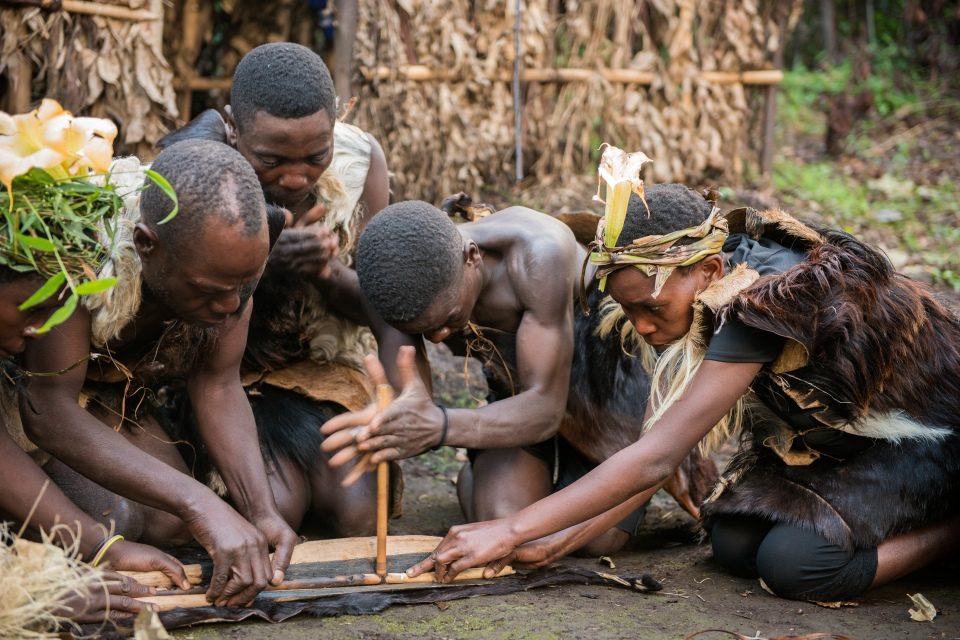
I ask whether the Batwa still worship their traditional deity. Many have converted to Protestantism and Anglicanism, Safari says, but he still worships Bihako, the god of the forest. He also worships Arsenal football club, I’m told with a smile. Although Safari keeps one foot planted in the past, he surprises me by saying he has never returned to the forest since the eviction nor does he think about it.
He looks forwards, towards a future in which the Batwa play a greater role in sustaining the knowledge of Uganda’s Bwindi forest and its conservation. For now they have lost their self-sufficiency through no fault of their own, but they have a lot to teach us through this experience – it is not simply a cultural show-and-tell. Who knows?
Humanity may come full circle one day and require the Batwa’s knowledge, appreciating their traditional customs as something ironically futuristic – a low-carbon lifestyle the rest of the world might have to revert to one day.
• For more information on Uganda go to visituganda.com.